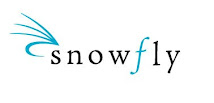By Robert Cowen Do provide immediate and continuous feedback and rewards: Gen Y & Gen X employees respond best to immediate reinforcement. Behaviors are shaped by closely tying praise and rewards with activities. Delaying rewards until the end of a quarter, month or week significantly reduces their value & benefit. Do look at an incentive program as on-going: Long term incentive programs produce twice the results of short term ones. If you’re serious about permanently improving KPI’s, an incentive program must be continuous. Do break-down the components of activities: Rather than offer monthly, quarterly and annual rewards, examine the sub-components that comprise them. A small daily reward for attendance with additional rewards for Mondays and Fridays will produce better results than a monthly perfect attendance award. Reward the daily homework, and the final grade will take care of itself. Do offer choice of rewards: Management can’t be clairvoyant when selecting rewards. Catalog merchandise is highly overpriced and reduced further in value when the employee sees the amount of taxes withheld. Award certificates and plaques look nice on the wall but do not change behavior. Employees want to choose their reward, thus a reloadable debit card is the most valued award, although extra time off or other intangibles are also very popular. Do keep it positive, fair, fun and exciting when earning awards: Everyone who qualifies must win something. The exciting part is finding out the amount. Playing games that generate a random number of reward points adds excitement to earning awards. Whether its spin the wheel, throw a dart, toss the beanbag or draw a number from a hat, not knowing the number of points brings suspense and heightens interest further reinforcing the activity. Broadcast the names of big winners to keep the “buzz” going. Do make rewards easy to earn and redeem frequently: Many points-based reward programs require weeks or months to accumulate sufficient points for redemption. A reloadable debit card with no minimum “load fee” is best because frequent redemptions of even small amounts are practical, thus behaviors can be regularly reinforced. Don’t spread rewards too thin: Trying to monitor and reward too many metrics can cause each to have insufficient value to achieve employee focus. Don’t distribute rewards in regular payroll: By paying rewards separate from payroll, they are seen as special in the eyes of the recipient, reinforcing how the reward was earned. Additionally, the employee can spend the reward without waiting until their next payday. Reward values can be easily added to the payroll system for tax reporting and withholding purposes. Do keep it simple by avoiding conflicting goals and objectives: The law of unintended consequences can cause conflicts. A goal of a higher sales conversion rate will increase average handle times. Improvements in quality scores or schedule adherence along with reduced turnover and absenteeism will undoubtedly lead to improvements in all other metrics as well. Do measure the ROI: If you’re not measuring the ROI of your incentive program, how can it be justified? An incentive program is the same as other functions; it must be continuously evaluated and tested with control groups or benchmarked with peers. Don’t overload yourself with program administration: Too great an administrative burden can cause burnout of even the best incentive program administrators. Management’s attitude and opinion of your incentive program is clearly visible to participants. Do involve management: Team leaders, supervisors and managers should participate in your incentive program. They should earn rewards themselves and distribute ad-hoc or discretionary awards. Do ask for feedback & keep it fresh: Take regular surveys of the participants to see what they like or want changed. Respond quickly to input. Actively solicit feedback and reward it. Do brag about your incentive program: Use employee comments about your incentive program in the “careers” section of your web site and in recruitment brochures. Do participate in outside surveys: A great way to evaluate your incentive program against peer groups is to participate in surveys. Many are anonymous and often participation entitles you to a free copy of the report. Don’t spend more than necessary: Spending more than three percent of base pay on incentives does not produce additional benefits. Most companies spend 1½% to 2% of base pay and achieve excellent results. Staying within budget will insure that the program continues and has an excellent ROI. Don’t accept high turnover, absenteeism and low schedule adherence as simply the cost of doing business: Snowfly is the cost effective solution and does not require a long term agreement. Test and compare it. Snowfly is quick to implement and easy to administer. Results are seen almost immediately.
Incentive programs can improve KPI’s 20% to 40% but must address specific needs or you’re wasting time, energy and money. Typical goals are to reduce turnover and absenteeism while improving schedule adherence, quality scores, conversion rates, average handle time and other metrics. Reducing early stage turnover has a huge multiplier affect on annual turnover rates. Spending $20 to $40 per month for incentives is usually all that’s necessary.
This informative and entertaining blog is brought to you by Snowfly
Snowfly’s web-based software, combined with our professional services and incentive rewards, empowers your organization to harness the power of consistent and frequent positive reinforcement to improve workforce performance, retention and morale. If you would like to learn more about Snowfly and our innovative aproach to employee incentives visit our website at www.snowfly.com/
Snowfly Blog Recent Posts
Thursday, April 16, 2009
Do’s and Don’ts for Successful Incentive Programs
at
3:33 PM
![]()
![]()
Labels: Employee Incentive Advice
Subscribe to:
Post Comments (Atom)







0 comments:
Post a Comment